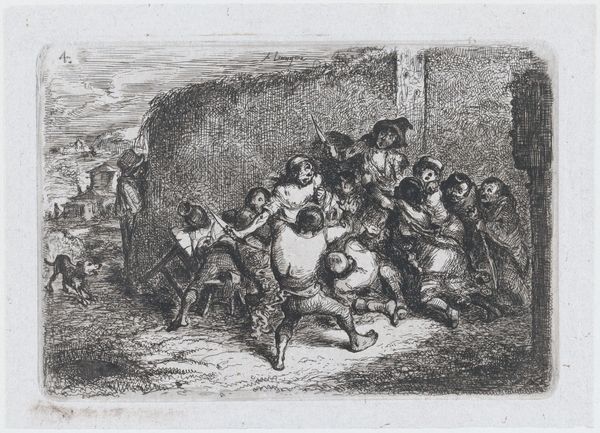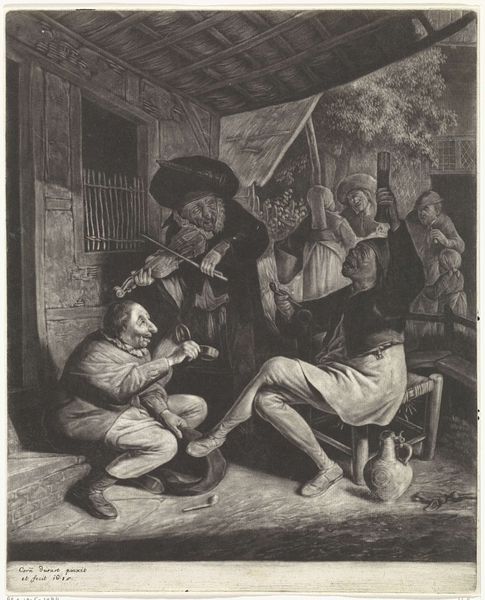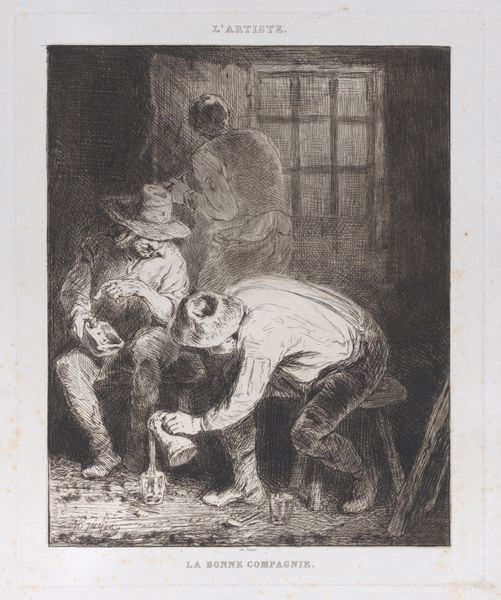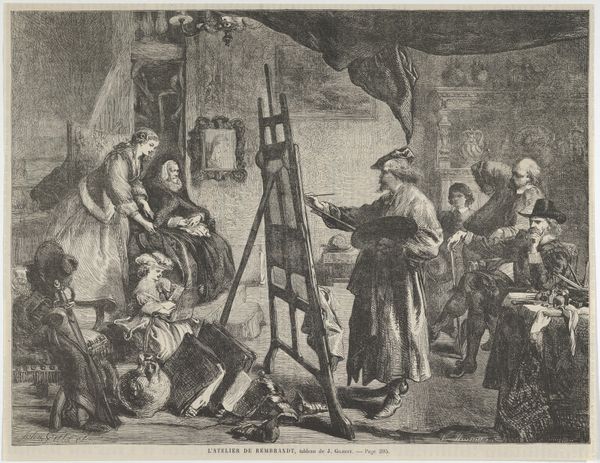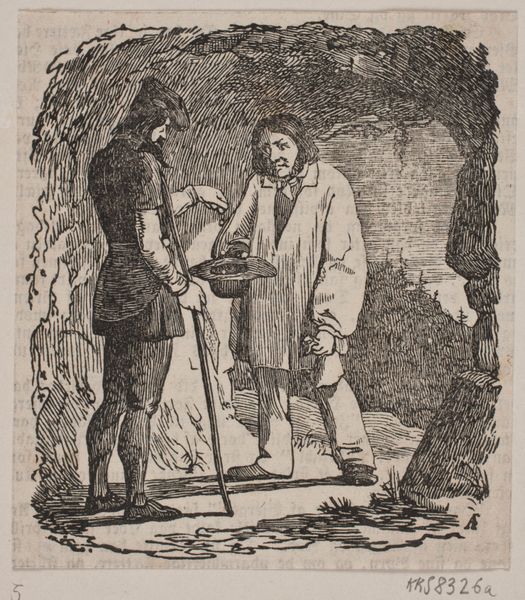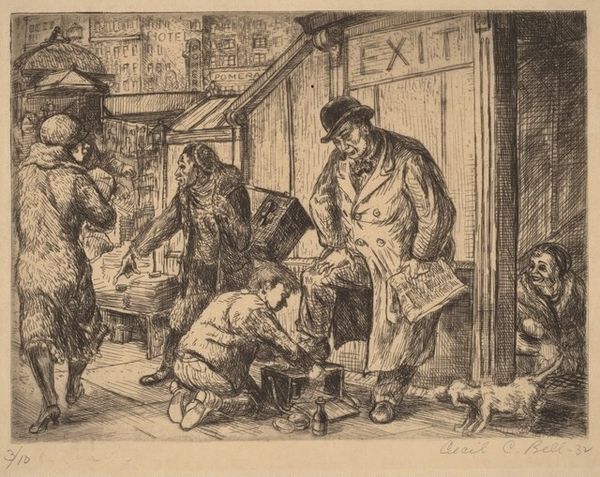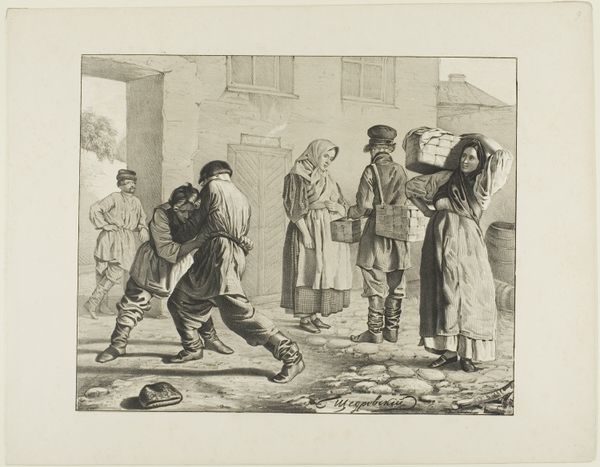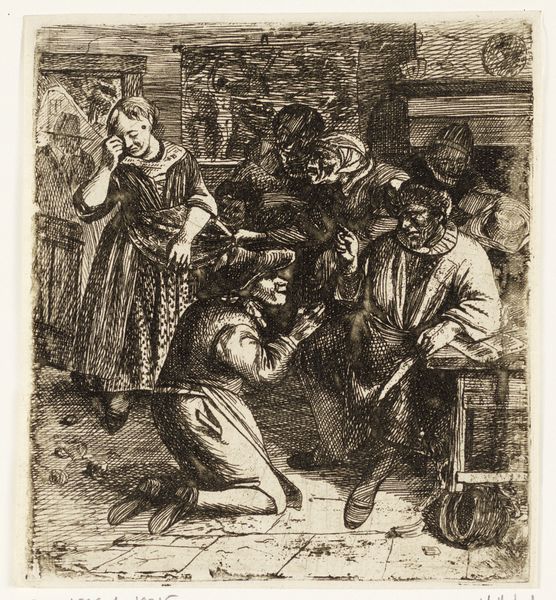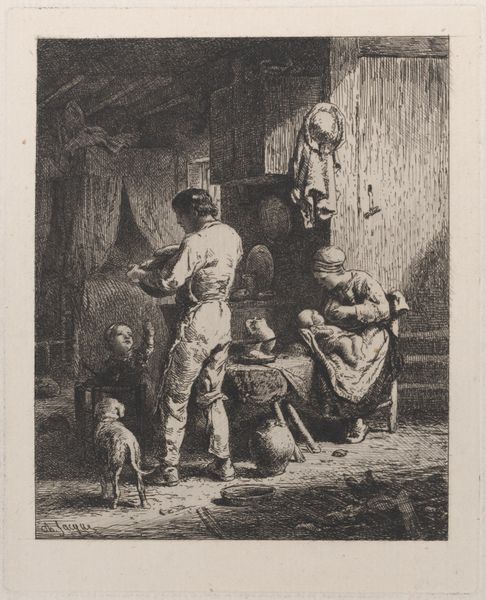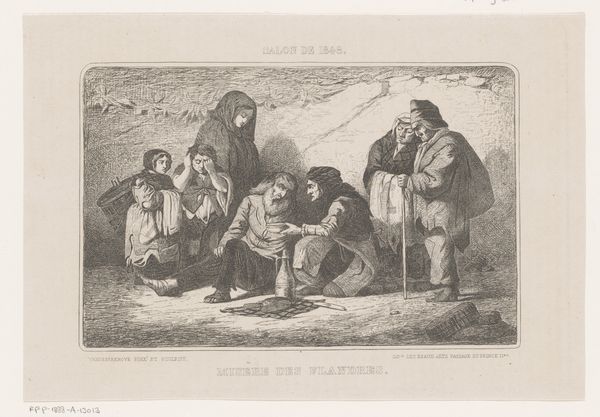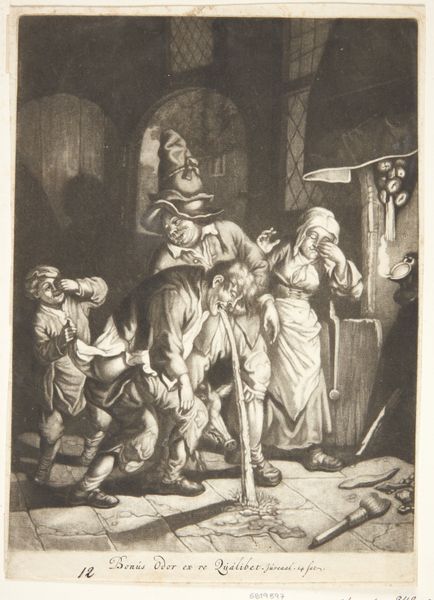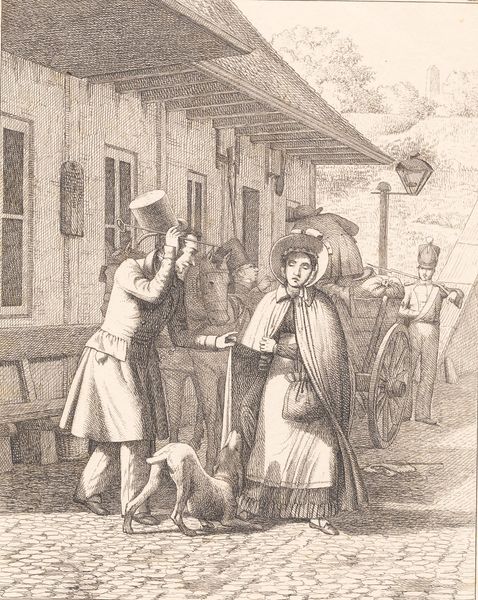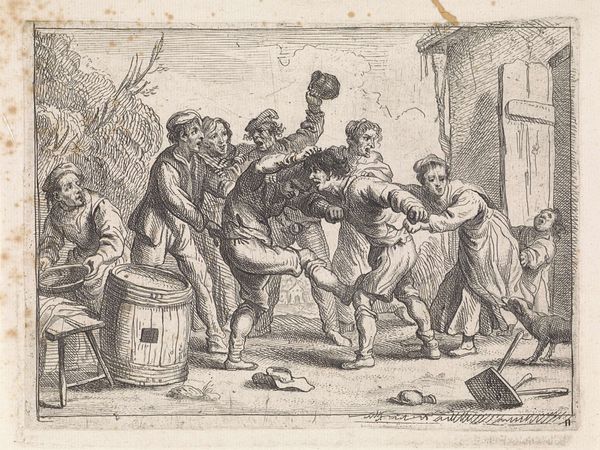
print, etching, engraving
#
narrative-art
# print
#
etching
#
figuration
#
romanticism
#
genre-painting
#
history-painting
#
engraving
Copyright: National Gallery of Art: CC0 1.0
This lithograph, L'Aumône, was made by Nicolas Toussaint Charlet sometime in the first half of the 19th century, using the relatively new printmaking technique that gives the work its character. Lithography allowed for a much more direct way of working than traditional engraving. The artist could draw directly onto the stone, using a greasy crayon, then treat the surface with acid to fix the image. This directness is evident in the almost sketch-like quality of the lines, creating a sense of immediacy and realism. Charlet’s choice of lithography speaks to the broader social and political context of the time. Lithography democratized image-making. It was a cheaper, faster process, that made prints more accessible to a wider audience, and allowed artists to engage with contemporary social issues like the plight of the poor, seen here. The lithographic process itself becomes part of the artwork’s message, reflecting a shift towards industrialization and mass production while still retaining the mark of the artist’s hand. This piece reminds us to consider the material and social conditions of artmaking, and to look beyond the traditional boundaries of fine art.
Comments
No comments
Be the first to comment and join the conversation on the ultimate creative platform.
